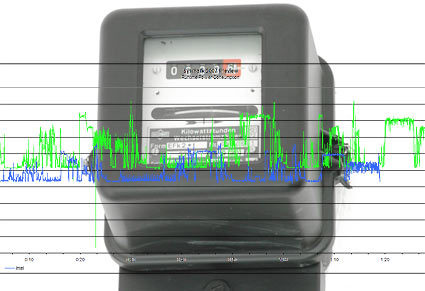The Truth About PC Power Consumption
PC Power Consumption Has To Be Observed Over Time
Tom's Hardware was one of the first publications to not only criticize ridiculously high heat dissipation, but also excessive power consumption where it's totally unnecessary. AMD and Intel have been in the news for years because their products either weren't efficient enough, or because of the advances they both made in reducing their power requirements. Measuring minimum (idle) and maximum power requirements of components, or of the overall system at the plug, is a good way to determine whether or not a device is thrifty. However, these measurements leave an important factor out of the equation: performance.
The delay of new processor products Phenom X2 and X4 forced AMD to shift its focus from "look at how fast our products are" to "look at the value we provide". The reason is Intel's Core 2 processor family beating the daylights out of the aged Athlon 64 family: on average, Core 2 Duo is not only faster, it's also more efficient than the Athlon 64 X2. It's not as bad as it sounds for everyone, though, as a decent Athlon 64 X2 system is still fast enough for the majority of users. A typical system certainly still provides good value, but the enthusiast crowd typically hasn't had much of a reason to saddle the foundering Athlon horse.
Intel has the advantage of having the faster and more efficient processors, as it has made several advances while adjusting and fine-tuning processor manufacturing. Compared to the first Core 2 Duo generation, at an idle power of up to 24 W, today's processor steppings are clearly more efficient and stay at around 10 W Compare Prices on Intel Core 2 Processors . In addition, most Core 2 processors, on average, are more overclockable than Athlon 64 X2 models.
Let's not forget that the processor is only one component inside the PC. Other hardware items also require power and add to the total power consumption, which eventually is also greatly influenced by the power supply. These components include the motherboard and chipset, the main memory, the graphics card - which can consume more than a high-end processor - the hard drive, optical drives and expansion cards. High-efficiency power supply units reach an energy efficiency of almost 90%, while average products stay at below 80%. This means that the remaining power is converted into heat, which is useless for you, even though you have to pay for that waste on your electricity bill. Knowing this, the impact of the CPU on the overall system is put into new perspective.
Our take is as follows: power consumption measurements of system idle power, or while a system is busy working on a heavy workload, create a snapshot of minimum/idle power and of the maximum power requirement. As already mentioned, though, this will only help give a feeling for these two extremes. The idle power is the baseline, which people use to start measuring power consumption. Meanwhile, the system or component performance is not considered at all - but it should be, as real-life application scenarios will always create a certain workload. This will always put components into a more energy-demanding state, but also result in quicker completion of a workload when faster hardware is used.
Join our discussion on this article!
Get Tom's Hardware's best news and in-depth reviews, straight to your inbox.
Current page: PC Power Consumption Has To Be Observed Over Time
Next Page Power Consumption And Performance Are Related!
Patrick Schmid was the editor-in-chief for Tom's Hardware from 2005 to 2006. He wrote numerous articles on a wide range of hardware topics, including storage, CPUs, and system builds.
-
trewinnard If you break it down to component level you can get an pretty accurate measurement of what your consumption should be. Checkout this PC power consumption breakdown| http://www.infobarrel.com/PC_power_consumption_explainedReply
Tbuzz -
trewinnard If you break it down to component level you can get an pretty accurate measurement of what your consumption should be. Checkout this PC power consumption breakdown| http://www.infobarrel.com/PC_power_consumption_explainedReply
Tbuzz
